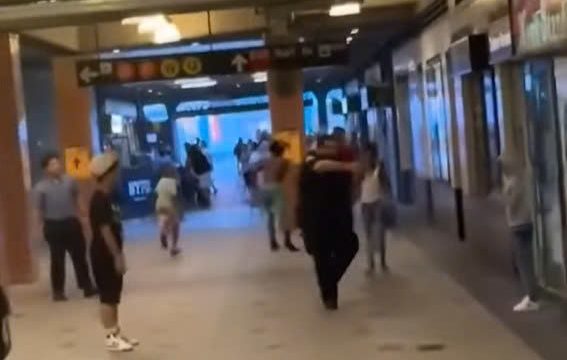Local authorities in Phnom Penh, Cambodia, recently responded to a troubling case that has since raised broader questions about social responsibility in rapidly growing urban environments. The incident occurred in Sangkat Bak Kheng, Khan Chroy Changvar, near the intersection of Keng Road and Win Win Boulevard, where a woman estimated to be around 30 years old was found lying alone in a vacant lot.

According to reports from witnesses, she was first spotted around 11:00 a.m., conscious but in an extremely weakened state. She remains unidentified. One resident told officials that he had seen her earlier that morning around 5:30 a.m. but did not intervene immediately, assuming she might be resting. Hours later, when he realized she had not moved from her position, he contacted the authorities. Emergency responders soon arrived and transported the woman to Prek Phon Health Center for urgent evaluation. Medical staff reported that she appeared severely emaciated and suggested she may have been discharged from a hospital without having access to proper aftercare.
While the story seems to be a straightforward account of emergency medical assistance, it also exposes a much larger issue affecting many urban centers across Southeast Asia and beyond—the challenge of protecting vulnerable individuals who are left without support in highly populated, fast-paced cities. Whether they are recovering patients, unhoused people, or simply individuals stranded without assistance, such cases reflect systemic gaps in how societies notice and respond to those who cannot always advocate for themselves. The fact that this woman remained in public view for several hours without immediate aid underscores the troubling reality of urban life: people in distress often go unseen, even when surrounded by thousands of others.
In cities like Phnom Penh, development and economic growth dominate daily rhythms, but those same factors can create conditions where compassion is easily overlooked. Traffic jams, construction projects, and the endless pace of city business can make it easy for passersby to rationalize ignoring someone who may be in need. Experts in urban sociology and public health frequently emphasize the importance of attentiveness in these environments, particularly when it comes to recognizing vulnerable populations. The World Health Organization has long pointed to the social determinants of health—factors like housing, economic security, and access to community support—as essential to maintaining individual well-being.
When these supports are missing, individuals can quickly become exposed to serious risks, and the burden of response often falls on emergency services rather than on preventive systems. This incident is a sobering example of that dynamic. The woman’s condition indicates she had likely been struggling for some time, yet it took hours for anyone to step forward with concern. This highlights the importance of ordinary acts of compassion—something as simple as checking on someone who appears unwell can alter the course of their life.
In this case, the resident who finally alerted authorities may very well have saved the woman from further decline, illustrating how community awareness can bridge the gaps left by institutional shortcomings. Beyond the immediate medical response, the case calls attention to the need for more comprehensive safety nets in rapidly urbanizing societies. Hospitals discharging patients without proper follow-up, cities with insufficient shelters for the unhoused, and the lack of outreach programs all contribute to a cycle in which individuals are left invisible until they collapse in public spaces. Governments, nonprofit organizations, and local communities have a shared responsibility to ensure that people leaving hospitals or living on the margins do not simply fall through the cracks.
Whether through stronger public health systems, community shelters, or mobile outreach teams, investments in these areas could prevent situations like this from happening in the first place. Social media discussion following the report has reflected a mix of outrage and reflection. Some users criticized the lack of timely response from bystanders, while others argued that this type of situation is not uncommon in cities where poverty and health care gaps remain significant. Many commenters called for greater compassion and personal responsibility in everyday life, stressing that urban living should not mean losing sight of basic empathy.
In essence, the Phnom Penh case is more than a local incident; it is a mirror reflecting the fragile balance between economic progress and social compassion. Modern cities thrive on energy and constant movement, but they also risk becoming places where individuals in crisis are overlooked until the situation becomes dire. The story of this unidentified woman reminds us that progress cannot only be measured by infrastructure and development but also by how communities care for their most vulnerable members. For now, she remains under care at Prek Phon Health Center, and her condition has stabilized, though her identity and personal circumstances are still unknown. Whether she was recently discharged from a hospital, abandoned, or suffering from chronic illness, her case speaks to the urgent need for attentiveness, compassion, and better systems of support in our cities.





